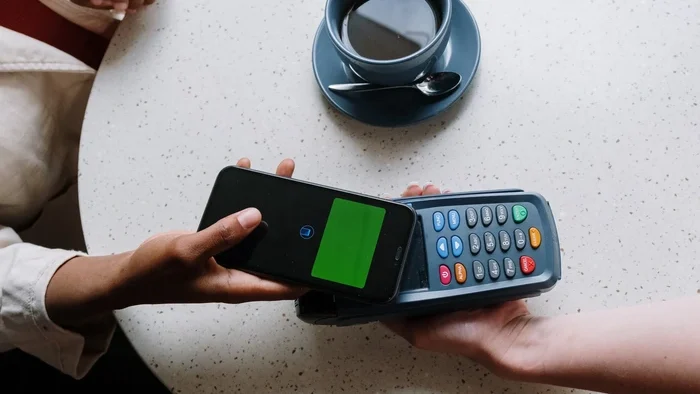6 Must-Do Things Immediately After Losing Your Credit Card

Credit: Andrea Piacquadio
The last time I lost my credit card was a decade ago. I can still remember it like it was yesterday.
I pulled out my wallet to pay for a purchase, only to find an empty slot where that gray piece of plastic should be. Of course, my first move was to search my purse, my pockets, my car, and everywhere else that wallet had been.
My second move was to retrace my steps.
Luckily, in that case, I could clearly remember the last time I’d used it. We’d eaten at a pizza place the previous night. I crossed my fingers and called the restaurant. I got very, very lucky. They had the card.
“Customers leave cards behind all the time,” the pizza parlor manager told me. That particular restaurant holds them at the bar, where credit cards are kept for customers with open tabs. In my case, I was lucky that the server grabbed the card and put it somewhere safe.
There are many other cases where cards end up in the TRASH. Or worse, in someone’s pocket.
Hopefully, you’ll never lose your credit card, but if you do, don’t panic. It’s bound to happen to all of us sooner or later. Breathe, keep a cool head, and follow the below steps to protect your credit and reduce your own liability.
✎ Recommended Page: How Does a Relative Open a Credit Card in Your Name? ➔
1. Lock Your Lost Credit Card
When my card wasn’t where it was supposed to be, my first instinct was to start looking. Back then, that was a good move.
Today? There’s something even better.
My credit and debit cards now have a “lock” feature, easily activated in the app. With one tap on my phone screen, I can put the card on pause. That ensures no new charges can come through on that card while I’m scrambling.
If you have recurring charges (like subscriptions with Amazon or Netflix), don’t worry. Most card issuers will let those go through. Only new purchases will be blocked.
The best thing about the card lock feature is that you’re in control. If you find the card, you just pull out your phone and unlock it. You can resume spending as though you never lost it.
2. Make Sure It’s Lost

Credit: Pixabay
Have you ever looked everywhere for something, only to find it was in an obvious place all along? That can happen with your credit card. Maybe you stuck it in the wrong pocket of your wallet. It might have fallen between your car seat cushions or the bottom of your purse.
Look in the most obvious places first – dump out your purse and remove every card from your wallet. Once you’ve done that, gradually expand your search, going as far as the last place you used the card.
Search the Immediate Area
True story: I’ve dug through the trash in search of a credit card.
I didn’t enjoy doing it. I loathed every minute of it, but I’d 100 percent do it again.
Why? Because even ten minutes of digging through the trash beat the hours it takes to update billing information with all those creditors. Yes, there are a lot of bills that automatically charge to my credit card.
Hopefully, you won’t have to dig through the trash, but do yourself a favor. If there’s even the slightest possibility your credit card ended up there, search for it before someone takes it out. This holds true whether it is at home or in a restaurant.
Before you do that, though, make sure you’ve followed the steps above to thoroughly search your purse and wallet. The last thing you’ll want to do is get grimy, digging through the trash, only to find your credit card somehow ended up in the same slot as your driver’s license.
Retrace Your Steps
Once you’ve determined your purse didn’t swallow it, start backtracking. Where have you been since last using your card? Is it possible for you to put your card in your coat or pants pocket? Check those. Check your car too, if you had it there.
Do yourself a favor while you’re checking and setting up notifications on your app. My credit card is through my bank, and I can go into the bank app and set up alerts. Every time a new charge comes through on that card, I get an alert. I can also set it up on my checking account.
To set this up, go to your credit card app and tap on Alerts. I can choose to push notifications for every single transaction, or I can set it to only notify me of transactions that exceed a particular amount.
I have it set by threshold, but if your card is lost, you’ll want to know about every single charge.
While you’re in the app, take a look at your most recent transactions. This will help jog your memory. You might have forgotten that quick stop for gas or a snack on the way home.
After you’ve searched your home and car, start making phone calls. If you don’t get results, head to the last place you used the card and ask to speak to a manager. Leave your name and phone number and request that they call you if the card turns up.
Do all of this as quickly as possible. Legally, you have up to 60 days to report the loss and avoid liability, but you’ll want to show you did everything possible to stop further damage.
3. Contact the Card Issuer

Credit: Anna Shvets
Unfortunately, despite all your searches, sometimes you have to throw in the towel. Your card is officially LOST.
In this case, throwing in the towel means letting your card issuer know your card is lost. Start by picking up the phone to let your card issuer know your card has been lost or stolen.
Normally, you’d just look on the back of the card to get the phone number. Obviously, that won’t be an option. If someone else in your household has the same card, you’ll find the number there. If your bank issued the card, they should be able to direct you to cardholder services.
Your app will also have contact information. You just might need to click around a little to find it.
If all that fails, look for any paper statements you might have. You can also search “[credit card issuer name] lost card services” and get the number.
Request a New Card
Your credit card issuer will cancel your card. You know what that means. You’ll have to request a new credit card.
That card you lost is no longer active, which means any charges coming through will be invalidated. If possible, request expedited delivery so you can get an immediate start on updating your payment information with those services.
Have a Backup Plan
The last time my credit card number was compromised, it took almost a week to get a replacement card.
My husband’s card was compromised last month. He called to report it and the next morning, FedEx showed up in our driveway. His replacement card had arrived.
He said he didn’t have to ask for it to be expedited. He forgot to request it. Either this is a sign things have improved, or he just has more phone charm than I do.
However, replacement card turnarounds can vary from one issuer to another. Visa cites a 24 to 72-hour turnaround time. Discover asks that you allow 4-6 business days.
I don’t know about you, but even going 24 hours without that piece of plastic can be tough.
I use my credit card for everything. I get points for my purchases, and if my credit card is stolen, someone can’t empty out my bank account like they could with a debit card.
But that debit card is on the bench, just waiting to be put into play.
The last time my credit card was compromised, I rerouted all upcoming recurring transactions to my debit card. You can easily predict what’s coming by looking at your credit card statement. Highlight the charges that came through last month around the same time.
I updated my information at sites I order from regularly. If you use delivery services for groceries or food, you may not even think about the fact that your card is stored there. If you place any online orders while you’re waiting for your new card, make sure you update the payment information before you finalize your purchase.
Once your new card arrives, don’t forget to make those updates again. You’ll also need to update your other recurring subscriptions with the new card number, but more on that later.
4. Check Your Credit Card Statement
As you’re canceling your credit card, it’s important to keep your own liability to a minimum. As long as you’ve done your due diligence, you aren’t responsible for more than $50. Some cardholder agreements go beyond this to state you owe nothing if charges are made on your card.
Chances are, after you lose your card, you won’t have any unauthorized transactions. Just in case, though, keep an eye on things. If anything comes up, let your card issuer know. If not, you can wait for your card to arrive, and then move on.
However, if there were charges, it’s important to document EVERYTHING. In some cases, you may want to file a police report. This can serve as an official record of the time and place the card was confiscated before being used for purchases.
You should also put your request to cancel the card in writing. The FTC recommends sending a letter to the card issuer with the date and time you noticed the card was missing, where you believe it was lost, and the date and time you made the call to report it lost.
Keep a copy of the letter, along with any notes you made during your phone calls.
5. Update Billing Information
Once you have your new card in hand, it’s time to get to work. You’ll need to update any payments you have automatically assigned to your credit card. That’s pretty easy. Usually, it’s just a matter of going to the website, tracking down the billing section under your account, and replacing the old card with the new one.
But how do you know where to go first?
I always start with my credit card statement. I head to the website and pull up the last 30 days. This can provide a handy list of companies and organizations that might have that old card number on auto-charge.
But there’s a flaw in that model. It might have been a few months since I bought a particular product or service. There are a few things I only buy annually or semiannually.
Once you’ve made that initial list, here are some things to consider adding to it.
Utilities
My first step is always to make sure my utilities are paid. After all, if my Internet or cell phone service gets cut off all of a sudden, I won’t be able to update everything else.
However, you’ll also want to make sure the electric, water, and gas companies have your updated information. If you pay for cable or satellite TV, update your credit card there as well.
Recurring Subscriptions
I’ve lost track of all the streaming services I use – Hulu, Netflix, Amazon Prime, Disney Plus, Paramount Plus, Peacock…
The list seems never-ending.
This could be a good time to do an inventory and unsubscribe from any you aren’t regularly using. For the rest, make sure your card is updated. That way, you’ll be ready when the new season of Loki goes live.
Online Ordering
I don’t know what I’d do without delivery and curbside pickup.
Unless it’s somewhere I shop weekly (or daily), I don’t store my credit card. I just enter it each time.
You’ll need to replace your credit card on each of those sites. You can wait until you need them to upgrade, but you might choose to add it to your list and check it off now, while you’re updating everything else.
While we’re talking about entering your credit card…
Digital Wallets

Credit: cottonbro studio
I still remember the early days of online shopping. I’ve abandoned purchases because I didn’t want to get my credit card out of my purse. I’m sure at one time, I had my credit card number and expiration date written on a scrap of paper next to my computer.
Those days are no more. Your browser saves your credit card number if you choose. For security purposes, this isn’t a good idea. You should remove that card and manually enter it every time. Another option is to use a password manager. Popular services like Bitwarden and 1Password let you securely store your credit card information.
Either way, if your credit card information is stored somewhere for convenience, you’ll need to update it there, as well. In Chrome, you can update your payment methods here. This also updates it for Google Pay.
If you use Apple Pay or Samsung Pay, those will have your old card numbers, too. Make sure you update each. The process can be tedious, but it’s easier to do it now than when you’re ready to make a purchase.
Related Digital Wallet Scams:
Memberships
You’ll probably notice this as you’re going through your statement, but pay attention to any memberships. You might miss something important, especially if you pay annually.
If you belong to a gym or pay for membership in any organization, they’ll need your updated credit card information. Don’t forget any professional organizations that might be charging your personal credit card.
6. Take Preventive Measures
You canceled your card. You have the new one in hand. You’ve updated your billing information. There were no unauthorized transactions on the other card. You’re good to go, right?
Don’t kick back and relax yet.
Now’s a great time to take measures to prevent credit card loss and theft from happening again. Start by jotting down the phone number from the back of your card. This will allow you to report it quickly if you lose it again.
Also, make it a non-negotiable personal policy to always put your card away before you leave a location. Keep it in the same spot, and keep your wallet in the same spot as well.
If you’re more likely to leave your wallet behind than your phone, consider a phone case that holds your credit card, driver’s license, and one or two other essential cards. You can buy cases with the feature built-in or a wallet that attaches to the back of your phone with adhesive.
While you’re preparing for future incidents, keep in mind that identity theft is an ongoing threat for all of us. Cases have tripled over the past decade, and you don’t even have to lose your credit card to be at risk.
Take measures to protect your contact information, Social Security numbers, and financial data.
You can also get peace of mind with some identity theft protection companies. Services like Aura, IdentityForce, and Identity Guard will help reimburse costs if you ever fall victim to an identity thief. Some of these services will also alert you when your identity might have been compromised.
If you’ve lost your credit card, hopefully, these steps will help walk you through the process. Remember to breathe, stay calm, and take it one step at a time. It might seem like a catastrophe right now, but in time, you’ll come to see it as a blip on the radar.
For those who have their credit cards tucked safely in their wallets (yes, I checked!), this is a great time to protect ourselves. Write down that credit card provider contact number and set up fraud alerts so that you’re on top of any issues when they arise.
Related Articles To Protect Your Credit:



